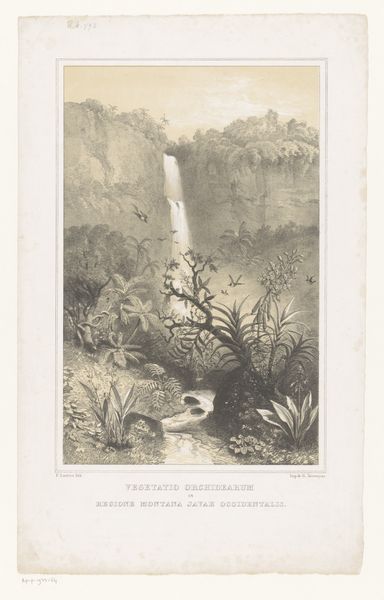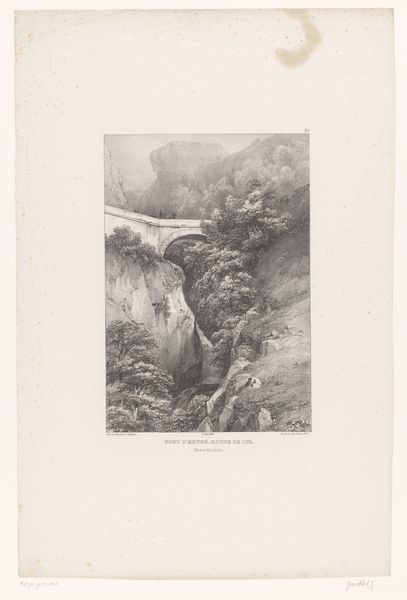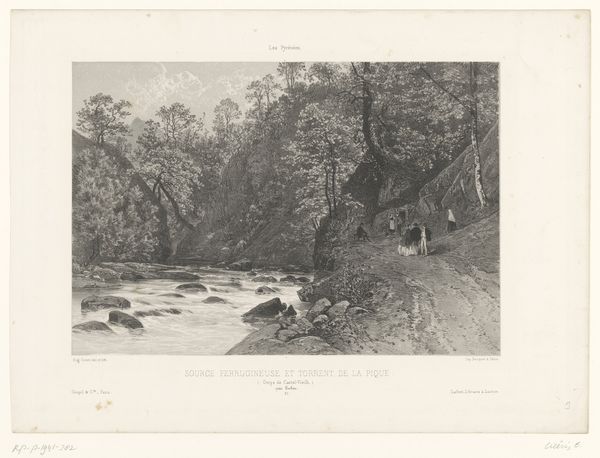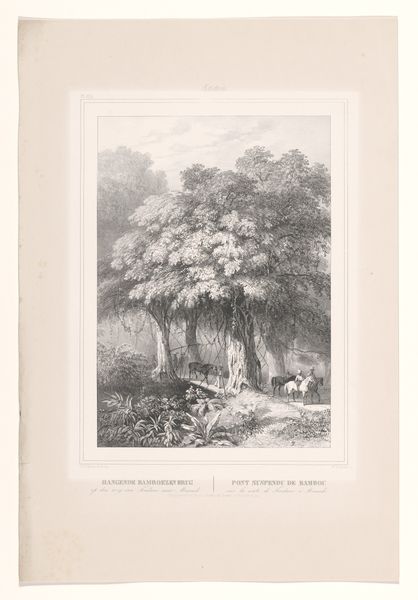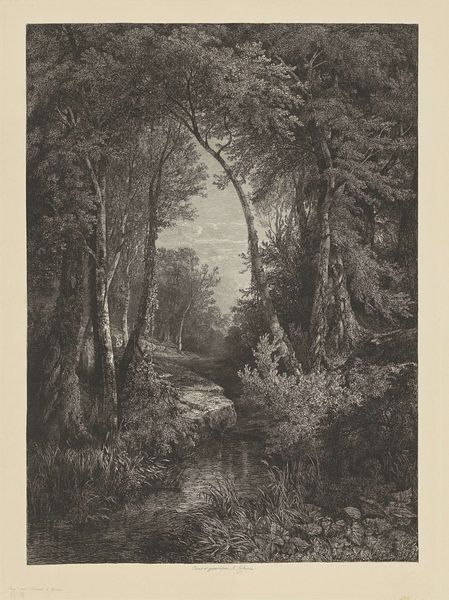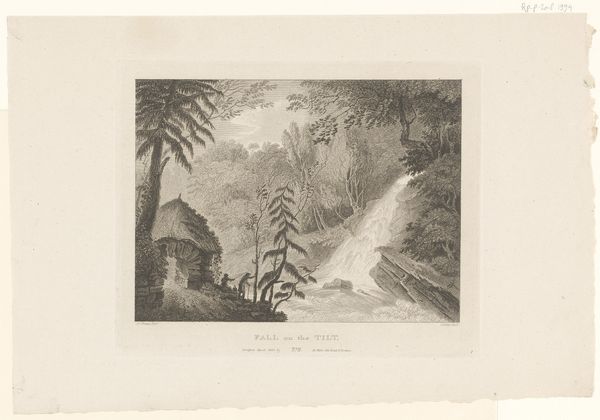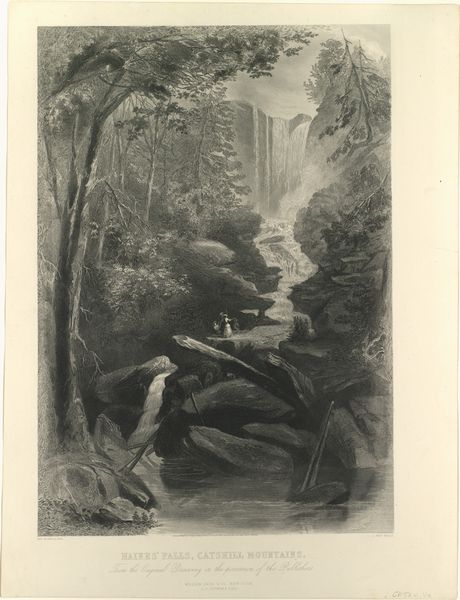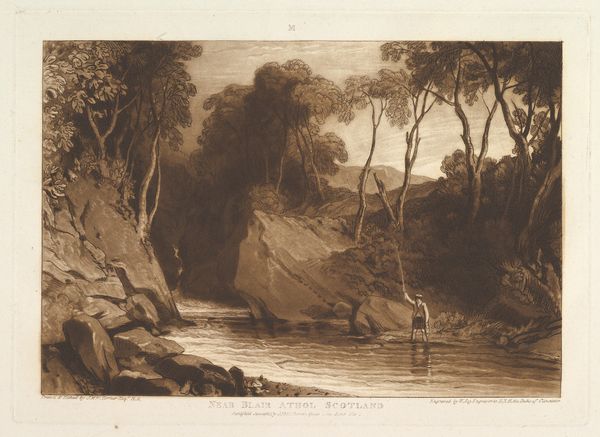
print, engraving
#
ink paper printed
# print
#
light coloured
#
landscape
#
waterfall
#
white palette
#
romanticism
#
orientalism
#
engraving
#
realism
Dimensions: height 510 mm, width 340 mm
Copyright: Rijks Museum: Open Domain
Curator: This is Paulus Lauters’ “Waterval bij Tondano,” dating from the period of 1843 to 1845. It’s an engraving, printed in ink on paper, and held here at the Rijksmuseum. What are your initial thoughts? Editor: Striking. The light values and precision of the engraving lend it a certain coolness, a controlled dynamism. The scale of the landscape, contrasted with the tiny figures at the base of the waterfall, is compelling. Curator: It's an excellent example of 19th-century Orientalism within the framework of Dutch colonialism, romanticizing the “exotic” landscape of the Dutch East Indies. Look at how Lauters positions the Indigenous figures; they are dwarfed, practically consumed by the overwhelming “natural” world. Editor: Indeed. It reflects a specific, mediated experience, one undoubtedly shaped by colonial interests and the desire to document and categorize the resources of the landscape. The emphasis seems less about an emotional connection to nature, more about a kind of resource inventory. Consider the labor involved: engraving like this was highly skilled, a product of specific training. The choice of print also makes it reproducible, extending its influence and impact beyond the immediate viewer. Curator: Precisely. We have to interrogate the power dynamics implicit in its production and consumption. What ideologies were being propagated through the visual language? This work operates within a larger network of colonial discourse, solidifying ideas of European dominance. And we can look at it today and think about those issues in the light of contemporary post-colonial theory and discourse. Editor: And those issues manifest physically in the print. How much of the paper was sourced from the region it represents? Was the ink a product of local or European industries? Who profited from its sale, circulation, and continued appreciation? It pushes one to ponder the commodification of this “oriental” space and its transformation into a collectible artifact. Curator: A valuable consideration! Seeing through a contemporary lens encourages awareness about power structures both past and present, doesn't it? Editor: Absolutely. When examining it under the lens of materiality and colonial power, the romanticism seems to further complicate its context and impact. Curator: A colonial picturesque masking power dynamics...thank you for your insights, it provides new layers of considerations. Editor: The pleasure's all mine. Thank you, it encourages considering it far beyond an artwork and instead as an art object entrenched in layers of political undertones.
Comments
No comments
Be the first to comment and join the conversation on the ultimate creative platform.
